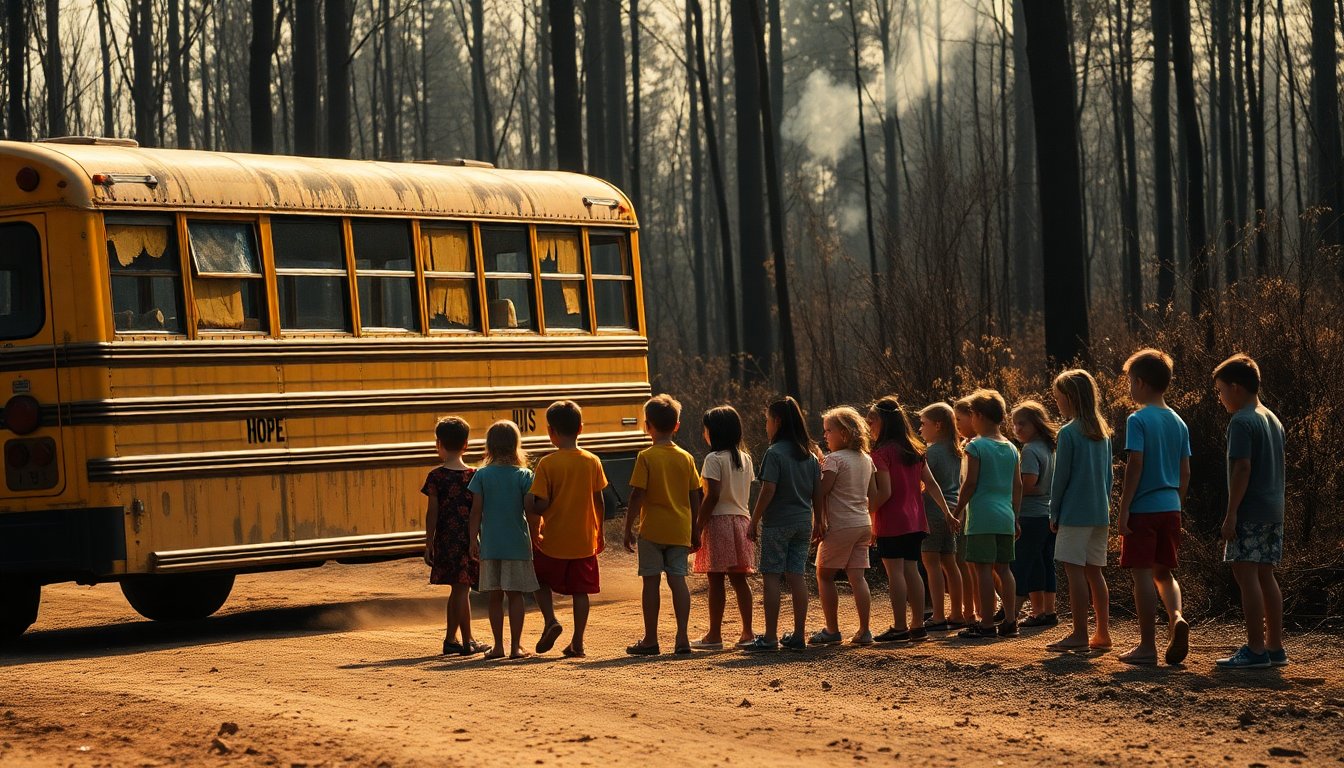Table of Contents
‘The Lost Bus’ presents a poignant retelling of the tragic events surrounding the 2018 Camp Fire. The film particularly showcases the heroic actions of a bus driver who guided 22 children through a life-threatening situation. With Matthew McConaughey portraying the lead character, the film highlights individual bravery and reflects the broader community’s struggles in the face of disaster.
Understanding the Narrative
Directed by Paul Greengrass, known for his immersive storytelling style, ‘The Lost Bus’ draws audiences into the harrowing experience of navigating a raging wildfire. While the film focuses on the immediate danger faced by the children and their bus driver, it hints at larger questions surrounding accountability and the community’s resilience post-crisis. Greengrass’s direction, combined with McConaughey’s charismatic performance, creates a gripping atmosphere that pulls the viewer into the chaos of the fire.
However, while the film captures the intensity of the situation, it raises critical questions about the systemic failures that contributed to the disaster. Audiences may yearn for a more expansive exploration of the events leading up to the fire, particularly regarding the roles played by utility companies and local authorities. This aspect of the narrative, while touched upon, feels underdeveloped, leaving viewers wanting a more comprehensive understanding of the circumstances of the Camp Fire.
Character Dynamics and Performance
The film’s character development largely revolves around McConaughey’s portrayal of Kevin, the bus driver. His personal struggles add depth to the narrative, as he grapples with familial issues amidst the unfolding disaster. The inclusion of McConaughey’s own family members in the film enhances the authenticity of the storytelling. America Ferrera, who plays schoolteacher Mary Ludwig, complements McConaughey’s character as they navigate the challenges presented by the fire.
Despite the chaotic environment, the film attempts to explore the personal stakes involved, particularly through Kevin’s worries about his son during the evacuation. This emotional thread, combined with the high-stakes rescue operation, provides a compelling backdrop against which heroism unfolds. However, the film occasionally suffers from a lack of deeper character development, with many of the children remaining nameless, detracting from the emotional weight of the narrative.
A Visual and Emotional Journey
Visually, ‘The Lost Bus’ is a testament to Greengrass’s commitment to authenticity. The handheld camera style immerses viewers in the frantic atmosphere of the fire. The cinematography, executed by Pål Ulvik Rokseth, enhances the tension as it captures the overwhelming scale of the disaster. However, some visual effects do not fully convey the horror of the fire, particularly in earlier scenes depicting firefighters’ efforts to contain the blaze. Nevertheless, the climactic moments when the bus is engulfed in flames are striking and effectively convey the urgency of the situation.
As the story progresses, the pacing fluctuates, with quieter moments interspersed among the chaos. The film reaches its peak tension as Kevin and Mary join forces to combat the fire while ensuring the safety of the children. This collaboration showcases their bravery and highlights the importance of community in times of crisis. Ultimately, ‘The Lost Bus’ serves as a reminder of the resilience of the human spirit, even in the face of overwhelming odds.


